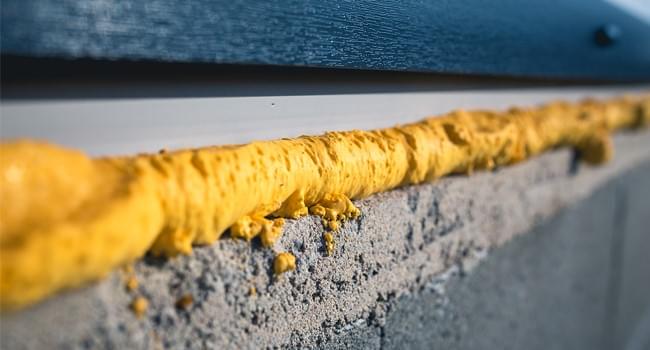
Our exclusive content
In 2020, polyurethane foams will have the largest market share of polymer foams with approximately 51 % of the market share. Polyurethane foam is currently used in a wide variety of applications including construction and automotive. Polystyrene foams have a 37% share of the market in 2020 and are mainly used for packaging. On the other hand, polyolefin foams account for 7 % of the market with use in automotive, footwear, packaging and some additional smaller applications.
Growing technological innovations in developing countries such as India, China and Indonesia are large contributing factors that are driving the growth of several polymer foams industries such as automotive, building and construction, packaging, bedding and furniture. In the building and construction area, for example, the growing activities have led to a rise in the demand for different types of polymer foams. This is leading to manufacturers coming up with innovations and creating various types of polymer foams for advanced industries.
What will you discover?
This report is based on extensive primary and secondary research. Primary research consisted of interviews with targeted interviews with packaging material suppliers, converters and experts drawn from key markets.
This was supported by secondary research in the form of extensive literature analysis of published data, official government statistics, domestic and international trade organisation data, company websites, industry reports, trade press articles, presentations, and attendance at trade events.
Who should buy this report?
Mark DeMeuse obtained a B.S.in Chemistry from Carroll College (now Carroll University) in Waukesha, WI and completed both an M.S. and PhD in Chemistry from Illinois Institute of Technology in Chicago. The topic of his PhD thesis was the properties of polymers in semidilute solutions. After finishing his PhD, he accepted a joint Postdoctoral appointment at University of Massachusetts/Amherst and Celanese Corporation. During that period of time, the majority of his work focused on high temperature polymers, including blends of liquid crystal polymers. After having left Celanese in 1989, he has held both technical and managerial positions at Enichem America, AET Films and Celgard. Currently, he runs his own consulting business in Charlotte, NC and specializes in the assistance of clients with the understanding of both the technical and business aspects of new technologies
- The impact rapid urbanization in emerging economies is having within this market
- An explanation of the sustainability adjustment in the processing parameters necessary to obtain the optimum property profile
- The several technology trends that continue to be of a growing interest in the polymer foams area.
In 2020, polyurethane foams will have the largest market share of polymer foams with approximately 51 % of the market share. Polyurethane foam is currently used in a wide variety of applications including construction and automotive. Polystyrene foams have a 37% share of the market in 2020 and are mainly used for packaging. On the other hand, polyolefin foams account for 7 % of the market with use in automotive, footwear, packaging and some additional smaller applications.
Growing technological innovations in developing countries such as India, China and Indonesia are large contributing factors that are driving the growth of several polymer foams industries such as automotive, building and construction, packaging, bedding and furniture. In the building and construction area, for example, the growing activities have led to a rise in the demand for different types of polymer foams. This is leading to manufacturers coming up with innovations and creating various types of polymer foams for advanced industries.
What will you discover?
- The range of properties each foam has and what this means in finding new applications in diverse areas
- How 5 to 6 % of the energy can be saved through the use of polymer foams
- The innovation behind the use of polymers from bio-sourced feedstock
This report is based on extensive primary and secondary research. Primary research consisted of interviews with targeted interviews with packaging material suppliers, converters and experts drawn from key markets.
This was supported by secondary research in the form of extensive literature analysis of published data, official government statistics, domestic and international trade organisation data, company websites, industry reports, trade press articles, presentations, and attendance at trade events.
Who should buy this report?
- Resin and polymer suppliers
- Producers and users
- Polymer foam processing and testing equipment suppliers
- Rubber and polymer additive suppliers.
Mark DeMeuse obtained a B.S.in Chemistry from Carroll College (now Carroll University) in Waukesha, WI and completed both an M.S. and PhD in Chemistry from Illinois Institute of Technology in Chicago. The topic of his PhD thesis was the properties of polymers in semidilute solutions. After finishing his PhD, he accepted a joint Postdoctoral appointment at University of Massachusetts/Amherst and Celanese Corporation. During that period of time, the majority of his work focused on high temperature polymers, including blends of liquid crystal polymers. After having left Celanese in 1989, he has held both technical and managerial positions at Enichem America, AET Films and Celgard. Currently, he runs his own consulting business in Charlotte, NC and specializes in the assistance of clients with the understanding of both the technical and business aspects of new technologies
